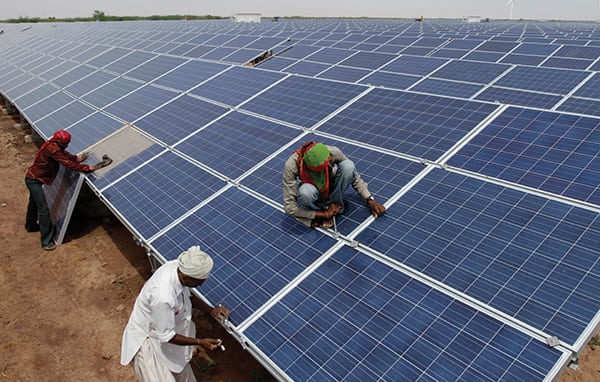India Proposes Massive Solar Build-Out
India’s Ministry of New and Renewable Energy (MNRE) in September issued a proposal to vastly increase the county’s reliance on solar photovoltaic (PV) generation, taking installed capacity from its current 2.6 GW to more than 20 GW over the next five years.
Following on the nation’s ambitious-but-troubled ultra-mega coal plant build-out—only one has come online, while another is near completion—the MRNE plan proposes to set up 25 ultra-mega solar parks with capacities ranging from 500 MW to 1,000 MW. India’s largest fully operational solar PV plant is a 150-MW plant in Madhya Pradesh state, though larger plants are under construction. The 590-MW Charanka Solar Park in Gujarat (a 2012 POWER Top Plant) has so far commissioned about 224 MW of its total capacity (Figure 7).
India has enormous undeveloped solar potential. Most of the country enjoys at least 300 days of sunshine per year with annual mean daily solar radiation in the range of 4.5 kWh/m2 to 6.5 kWh/m2, according to the MNRE proposal. However, bureaucratic hurdles, policy confusion, problems in acquiring the necessary land—frequently a contentious issue in India—and challenges with connecting to the grid have combined to handicap the country’s solar PV development. (For more on this issue, see “Despite Challenges, India Banks on Renewable Energy” in the May 2014 issue.)
The MNRE proposal aims to expedite development by tackling these problems. State and central governments would be responsible for land acquisition, grid connectivity, and supporting infrastructure. State governments will be required to purchase at least 20% of the power, though developers will be free to arrange whatever power purchase agreements they see fit.
The central government will provide financial support for development totaling around $650 million, or about 30% of individual project cost. Substantial public involvement is anticipated, but the proposal allows for up to 49% private ownership of an entity developing a solar plant.
India has several gigawatts of solar capacity currently in development, including a 700-MW project in the Rewa district of Madhya Pradesh. Plans to build what would be the world’s largest solar plant in Rajasthan, a $4.4-billion, 4-GW project, have run into trouble, however, with the state government reportedly considering canceling the project over environmental and political difficulties.
—Thomas W. Overton, JD
